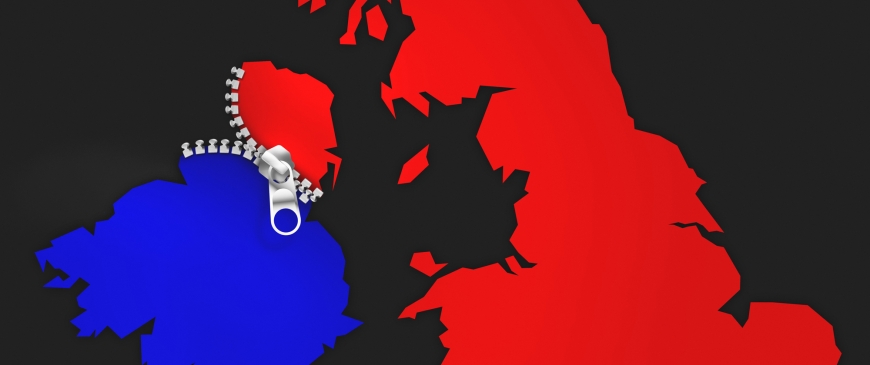
Whether transition extension or backstop, Britain needs to embrace the consequences
If reports are correct, the landing zone for Northern Ireland and the Brexit Withdrawal Agreement is in sight. If, by December 2020, the future trading arrangements between the UK and EU fail to obviate the need for physical infrastructure or associated checks on the land border with Ireland, the UK will face a decision: whether to extend the standstill transition period or enter into a “backstop” that would mean Northern Ireland remaining effectively in the EU’s single market for goods and agrifood, supplemented by an EU-UK customs union.
It’s worth noting that an ultimate insurance policy, or backstop to the backstop, that means Northern Ireland exclusively remaining in the EU’s customs union and single market for goods will probably continue to lurk within the agreed text.
In all likelihood, even if the future trading arrangements were to be deep enough to avoid a hard Irish border, just under two years will not be long enough to conclude negotiations. This will require one of the two options to be taken, but which?
Philip Hammond, the chancellor, is reported to favour extending the transition period over entering into a backstop. From an economic perspective this is the logical choice. During the transition, UK businesses trading with the EU will continue to do so on the same terms as now. However, politically, it could be difficult; extending the transition would mean continued freedom of movement and additional payments to the EU.
The alternative of moving into the UK’s proposed backstop comes with its own issues. While the backstop would ensure the UK as a whole remains a single customs territory, it would erect an intra-UK regulatory border in the Irish sea, with some new checks required on goods entering Northern Ireland from Great Britain.
The backstop would also mean new barriers for UK trade with the EU. While an EU-UK customs union would remove the burden of rules of origin – meaning that tariff-free trade would not be conditional on exporters demonstrating their products are sufficiently local – it would still create more friction at the border and bureaucracy.
For example, unless supplementary provisions were included, companies trading with the EU would be required to deal with import and export declarations; products of animal origin sold to the EU would need to enter via veterinary border inspection posts where they would be subject to document, identity and physical inspections; VAT would become payable upon import, causing cash-flow issues for some companies; and selling services into the EU would become significantly more difficult.
Some barriers are not so obvious, but could be just as cumbersome. While British companies currently able to self-certify products to European standards would still be able to place the European mark on their goods, the relevant technical dossier would now need to be held by an EU-based representative or the importer, who would now be liable if something were to be amiss.
Ultimately, entering into the proposed backstop means asking business to adapt twice: once when it comes into force, and then perhaps once more when a final EU-UK relationship – that might resolve many of the issues stated above – is concluded.
However, going the backstop route would mean the UK had taken a step further in its quest to extricate itself from the EU. Being in a customs union would place some constraints on UK trade policy – specifically its ability to unilaterally amend its import tariffs – but it would, theoretically, be free to negotiate new international agreements covering other areas such as services, intellectual property, data and procurement. It would also be free to tweak domestic regulation in areas it had previously faced EU constraints (with the caveat that the EU will insist on safeguards to ensure a level playing field and prevent competitive deregulation).
All of the above assumes the withdrawal agreement is signed and ratified and the agreed Northern Irish protocol looks something like what has been articulated here. But both options – transition extension or embracing the backstop – only exist to further postpone the inevitable. The UK will eventually need to embrace the consequences of its decisions; if it wants a Canada-style trade agreement then Northern Ireland will require its own distinct relationship with the EU.
A closer UK-EU relationship might ensure an all-UK solution, but it would constrain Britain’s ability to act entirely independent of EU influence. And so it ever was.
Sam Lowe is a senior research fellow at the Centre for European Reform.
